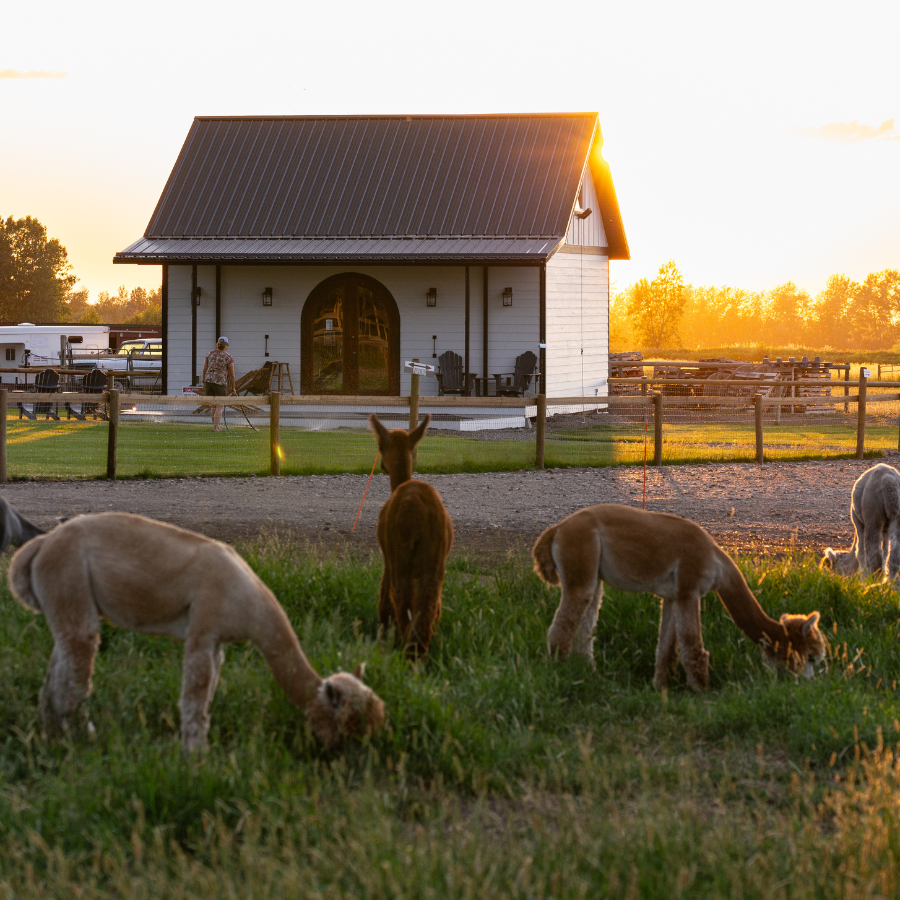So what is a typical day like raising alpacas? Do we just hang out in the barn with them? Sometimes. Are we always outside? It depends on the weather.
Do we love our job? Yes.
Much of what we do during our days depends on the season. In the Spring, cria start to arrive. Most alpaca babies are born between 10 AM and 2 PM in the afternoon. We watch the progress of the birth, welcome them into the world, then continue on raking or vacuuming manure throughout the pastures.

The end of May means it's time to shear, collecting alpaca wool to make our alpaca products, including yarn, hats, scarves, socks, sweaters and blankets.
We rebreed our females 14 to 20 days after giving birth, so our herdsires are just as anxious as the rest of us to see the babies born throughout Summer. Alpacas are induced ovulators, meaning that once the females are bred, typically the egg drops 24 hours later and is fertilized, making it fairly predictable to get our ladies pregnant.
By Autumn, we are usually finished with alpaca birthing and alpaca breeding, are putting up about 35 tons of hay and getting ready for National Alpaca Farm Day. We open our farm doors to the public for a weekend in September to offer alpaca information, alpaca clothing and simply enjoy the last of the warm weather.
Throughout Winter, we are still scooping manure in the barn, but most of our time is spent inside, coordinating local knitters to knit the alpaca yarn into a scarf, hat or other piece of clothing. Our alpaca products are in highest demand at that time and we ship to all corners of the U.S. At the beginning of the New Year, the cria are about 6 months old and ready to be weaned and halter trained. We work with the weanlings almost daily for about 3 weeks, teaching them to lead, lift their feet, be scratched behind their ears and become independent from their mothers.
Then, Spring is back in full bloom and we are ready once again for the new set of babies on the farm and to do it all over again.
In truth, the alpacas themselves are not that much work. We clip alpaca toenails every 3-4 months, do a herd health check several times each year and just let the alpacas be alpacas. They are hardy livestock and as long as they are safe and have some hay, they are pretty happy.
The work comes with the business side of things. There is always paperwork to plow through, a website to update and maintain, and phone calls to make for buyers, knitters, sellers and everything else it takes to run an alpaca ranch. Some days can become overwhelming, but when we walk out to the back pasture, sit down in the middle of our herd as the sun sets over the mountains, it’s a reward that far too few people receive at the end of the day. When the babies are running around at the “witching hour” of dusk, playing tag and then pronking to their mothers to cuddle up for the night, I want to keep that moment for myself, yet tell the whole world about it.
Can’t everyone have this job? Perhaps not everyone wants to rake manure and fix fence in a blizzard, but it sure suits us well.



